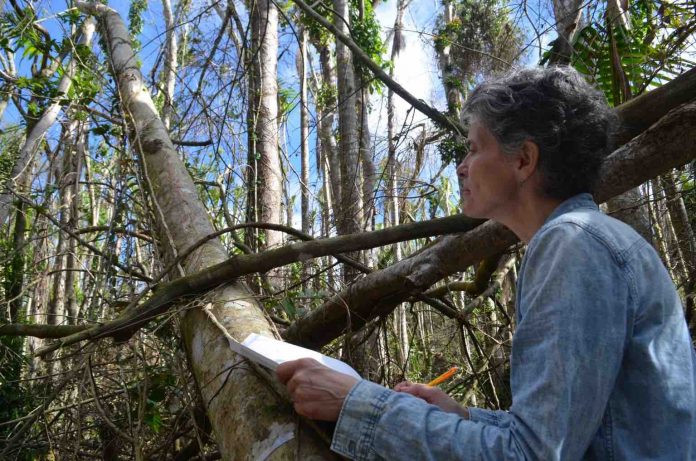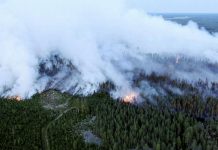As people age, their ability to reproduce declines. But what about trees? As they get bigger, does their ability to produce seeds, nuts or fruits continue to grow, too? A new study of nearly 600 species worldwide nips that assumption in the bud. In about 80 percent of species examined, trees’ fecundity peaked or plateaued as they reached an intermediate size. After that, it declined. The other 20 percent likely experience declines too; there just isn’t enough data yet on older, larger trees of their species to know for sure, say the authors of the research. The study was published in the Aug, 16 issue of the Proceedings of the National Academy of Sciences.
“Tree fruits and nuts comprise 3 percent of the human diet and are also important for many birds and small mammals, while tree seeds are vital for forest regeneration,” said Tong Qiu, a postdoctoral researcher at Duke University who led the study. “To manage and conserve these resources effectively, we need to know if declines in fecundity are likely to occur, and at what size or age they might set in.”
Answering those questions has, until now, forced ecologists to go out on a limb.
“On one hand, it’s extremely implausible that fecundity in trees indefinitely increases with age and size, given what we know about age-related deterioration in humans and all other multi-celled organisms,” said coauthor James S. Clark a professor of environmental science at Duke. “On the other hand, strictly speaking, there’s been no conclusive evidence to disprove it.”
Because many fruit tree crops are replaced every two or three decades as yields begin to decline, and because of the difficulties of monitoring seed production in non-cultivated trees, most studies on tree fecundity have relied on datasets that skew toward younger trees that are still small or medium-sized. Lacking sufficient data on seed production in many species’ later years, scientists have had to approximate these numbers based on averages from earlier stages. The problem is that trees don’t necessarily produce a regular number of seeds each year at any size or age. Though production tends to be heavier overall in a tree’s earlier stages, there can be huge variations from year to year and tree to tree, from zero seeds one year to millions the next.
The new study avoids this pitfall by synthesizing data on seed production and maturation status for 585,670 individual trees from 597 species monitored through a network of long-term research sites involving dozens of institutions around the world. The network’s database contains detailed records, often stretching back many decades, on the annual seed production of trees growing at more than 500 different sites in North America, South America, Asia, Europe and Africa. Observations are typically obtained through seed traps or estimates of total seed production based on cone counts. Having access to such a vast repository of data enabled the team to develop a model calibrated to calculate long-term fecundity more accurately.
For instance, a team led by study coauthor Maria Uriarte of Columbia University’s Earth Institute has collected fruits and seeds from one Puerto Rico plot every two weeks since 1992. The data from that site show that trees reduce investment in seed production as they age. “This information is critical for our ability to accurately predict future forest composition using models as well as the tree species ability to disperse to new environments in a changing climate,” said Uriarte.
“For most of the species we study, including humans, one of the most fundamental variables we measure is birth rates,” Clark said. “For animals, it’s often easy—you count the number of eggs in a nest or pups in a litter. But when you get to trees, it’s trickier. You can’t directly observe how many seeds are being produced, and as this study shows, approximation doesn’t work either. You need another way to do that.”
Fifty-nine researchers from 13 countries or territories—Chile, Italy, Canada, Poland, France, Spain, Switzerland, Japan, Slovenia, Germany, Panama, Puerto Rico and the United States—coauthored the study. Primary funding came from the U.S. National Science Foundation, NASA and the French Ministère de ’Enseignement Supérieur de la Recherche et de l’Innovation.







